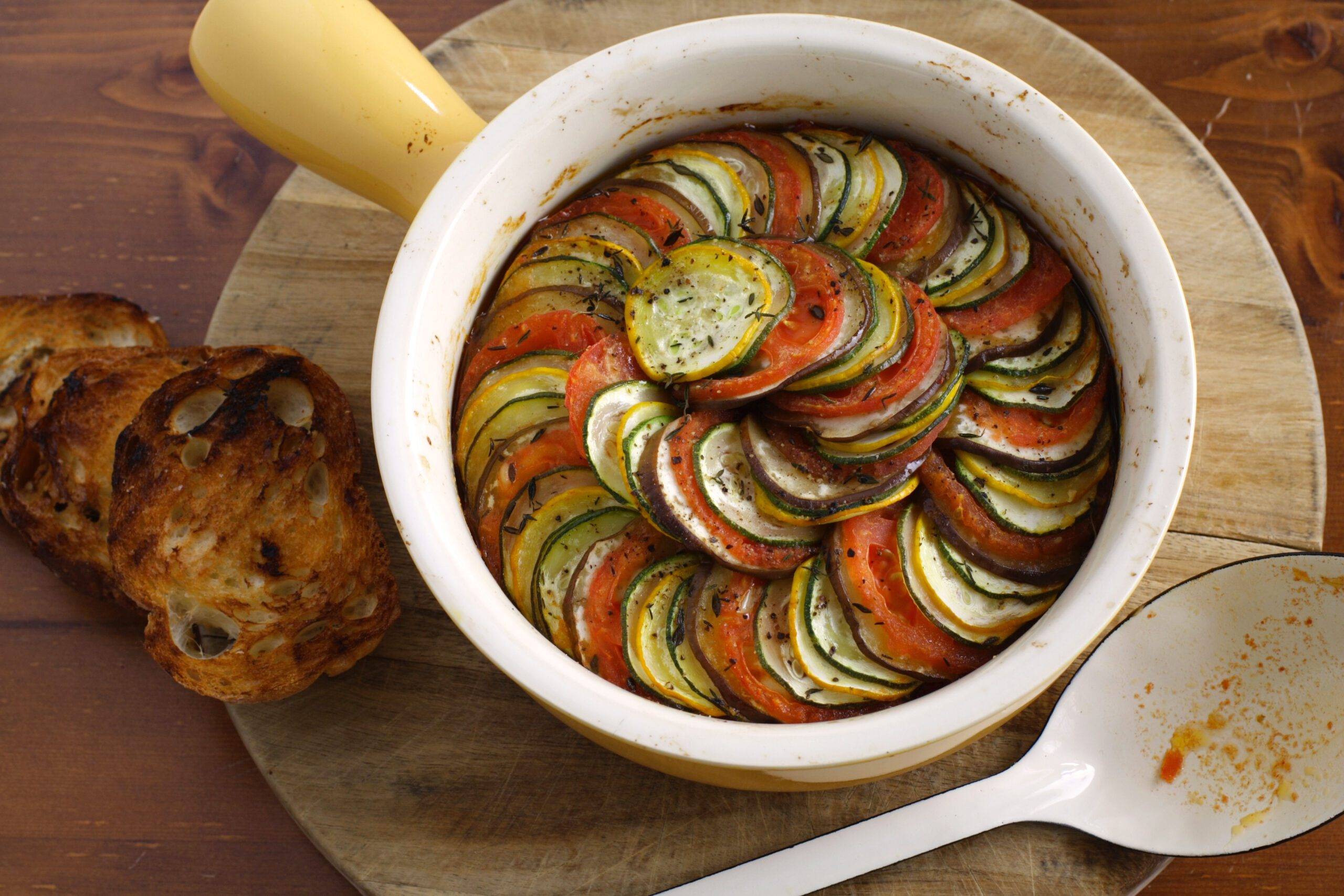Whole foods pizza can be a healthy option thanks to its high-quality ingredients and nutritious toppings. However, it’s important to keep portion sizes in mind and choose healthier toppings to maximize its nutritional value.
At whole foods, their pizza dough is made from scratch using 100% organic wheat flour, which is a healthier alternative to refined white flour. The crust is thin and crispy, and the tomato sauce used is made from organic tomatoes that are rich in antioxidants.
Whole foods also offers a variety of vegetable toppings, including fresh produce like spinach, mushrooms, and peppers, which are packed with essential vitamins and minerals. By opting for these healthier options, whole foods pizza can be a delicious and nutritious choice for your next meal.

Credit: www.reddit.com
Understanding The Nutritional Value Of Whole Foods Pizza
Understanding the nutritional value of whole foods pizza is essential in determining whether it is a healthy choice. Discover the balance of fresh ingredients, whole grains, and nutrient-rich toppings that make this pizza a wholesome option for your diet.
Pizza is a beloved food around the world, and whole foods market offers a variety of options for those who are health-conscious. If you’re wondering whether whole foods pizza is a healthy choice, let’s take a closer look at its nutritional value.
By exploring the ingredients used in whole foods pizza, analyzing its nutritional content, and comparing its calorie count with traditional pizza, we can gain valuable insights into its health benefits.
Exploring The Ingredients Used In Whole Foods Pizza:
- Organic whole wheat crust: The use of organic whole wheat crust provides more fiber and nutrients compared to refined flour crusts.
- Fresh vegetables: Whole foods pizza is generally loaded with a variety of fresh vegetables such as bell peppers, broccoli, spinach, and mushrooms, which are packed with vitamins, minerals, and antioxidants.
- High-quality cheese: Whole foods prioritizes using high-quality, organic cheeses that are lower in saturated fat and free from added hormones.
- Whole foods tomato sauce: The tomato sauce used in whole foods pizza is often made with organic, vine-ripened tomatoes, providing essential vitamins and minerals.
Analyzing The Nutritional Content Of Whole Foods Pizza:
- Fiber: Whole foods pizza crust made from organic whole wheat flour contains higher levels of fiber compared to traditional pizza crust.
- Vitamins and minerals: The inclusion of fresh vegetables and high-quality tomato sauce in whole foods pizza ensures a higher content of essential vitamins and minerals.
- Protein: Whole foods pizza can be a good source of protein thanks to the cheese and vegetables included in the toppings.
Comparing The Calorie Count Of Whole Foods Pizza With Traditional Pizza:
- Whole foods pizza tends to have a lower calorie count compared to traditional pizza, as it often uses healthier ingredients such as whole wheat crust and lower-fat cheeses. However, it’s important to note that the specific calorie count can vary depending on the toppings and portion size.
When it comes to choosing a healthy pizza option, whole foods pizza provides a range of nutritious ingredients that make it a healthier alternative to traditional pizza. Its use of organic whole wheat crust, fresh vegetables, and high-quality ingredients ensures a higher nutritional value.
Although calorie counts can still differ, opting for whole foods pizza can be a great choice for those looking for a healthier pizza option without compromising on taste. So, the next time you’re craving pizza, consider giving whole foods pizza a try!
The Benefits Of Whole Foods Pizza
Whole foods pizza offers a range of health benefits due to its use of whole, organic ingredients. It is a healthier alternative to traditional pizza, as it provides nutrients and avoids artificial additives. Enjoy a guilt-free indulgence with whole foods pizza.
Highlighting The Use Of Organic And Natural Ingredients:
- Whole foods pizza takes pride in using organic and natural ingredients, which sets it apart from conventional fast-food chains.
- The dough is made from organic, unbleached flour and uses extra virgin olive oil, avoiding any unhealthy fats or preservatives commonly found in pre-packaged crusts.
- The pizza sauce is made from ripe, organic tomatoes, ensuring a burst of natural flavors and essential nutrients.
- Toppings are sourced from local farmers, guaranteeing that only fresh, pesticide-free produce reaches your plate.
- The cheese is made from organic milk, free from hormones and antibiotics, providing a rich source of calcium and protein.
Discussing The Potential Health Benefits Of Whole Foods Pizza:
- Whole foods pizza offers a range of health benefits, mainly due to its emphasis on natural and organic ingredients.
- Organic ingredients are free from harmful pesticides, chemicals, and genetically modified organisms (gmos), which can have detrimental effects on our health.
- Consuming pizza made from whole, unprocessed ingredients like whole grains, lean meats, and fresh vegetables can boost our overall nutrient intake.
- The antioxidants present in organic vegetables help in reducing oxidative stress and inflammation in the body, potentially lowering the risk of chronic diseases.
- Whole foods pizza provides a tasty alternative without compromising on nutritional value, making it an appealing option for health-conscious individuals.
Exploring How Whole Foods Pizza May Promote Weight Loss:
- Whole foods pizza offers a healthier option for those looking to lose weight or maintain a healthy lifestyle.
- Unlike traditional pizza, whole foods pizza uses whole grain crusts, which are rich in fiber and nutrients, keeping you full for longer and preventing overeating.
- The emphasis on fresh vegetables and lean proteins provides a balanced meal with fewer calories compared to pizzas laden with processed meats and unhealthy fats.
- The absence of artificial preservatives, high-fructose corn syrup, and excessive sodium in whole foods pizza contributes to better weight management and reduces the risk of bloating or water retention.
- By opting for whole foods pizza, you can enjoy a guilt-free and satisfying meal that supports your weight loss goals.
Remember, it’s essential to choose whole foods pizza options that are lower in saturated fats and sodium, and to balance your overall diet with regular exercise for optimal health and weight management.
Potential Drawbacks Of Whole Foods Pizza
Potential drawbacks of whole foods pizza include its high price compared to other pizza options, the limited availability of certain toppings and flavors, and the possibility of exceeding daily calorie and fat intake due to the calorie-dense ingredients used. Despite its organic and natural ingredients, moderation is advised for those seeking a healthy pizza option.
Discussing The Higher Price Point Of Whole Foods Pizza:
- Whole foods is known for its commitment to providing organic, high-quality ingredients, and this is reflected in the price of their pizzas.
- Compared to your average pizza joint, whole foods pizza can be quite pricey.
- However, it’s important to note that the higher price point is due to the premium ingredients used and the focus on sustainability.
Examining The Impact Of Portion Sizes On The Nutritional Value:
- Whole foods offers a range of pizza sizes, from personal to family-sized.
- It’s easy to overindulge when faced with a delicious pizza, so be mindful of portion sizes to maintain a balanced diet.
- By opting for a smaller pizza or sharing a larger one, you can enjoy the flavors of whole foods pizza while keeping your calorie intake in check.
Addressing Concerns About The Sodium Content In Whole Foods Pizza:
- Whole foods pizza tends to be on the higher end in terms of sodium content.
- The combination of cured meats, cheese, and sauce can contribute to increased sodium levels.
- If you are following a low-sodium diet or have sodium restrictions, it’s essential to be aware of the sodium content in whole foods pizza and choose your toppings accordingly.
With its premium ingredients and focus on sustainability, whole foods pizza offers a higher quality alternative to traditional pizzas. However, there are some potential drawbacks to consider. Let’s delve into these concerns further to help you make a more informed decision when indulging in whole foods pizza.
Discussing The Higher Price Point Of Whole Foods Pizza:
- Whole foods is known for its commitment to providing organic, high-quality ingredients, and this is reflected in the price of their pizzas.
- Compared to your average pizza joint, whole foods pizza can be quite pricey.
- However, it’s important to note that the higher price point is due to the premium ingredients used and the focus on sustainability.
Examining the impact of portion sizes on the nutritional value:
- Whole foods offers a range of pizza sizes, from personal to family-sized.
- It’s easy to overindulge when faced with a delicious pizza, so be mindful of portion sizes to maintain a balanced diet.
- By opting for a smaller pizza or sharing a larger one, you can enjoy the flavors of whole foods pizza while keeping your calorie intake in check.
Addressing concerns about the sodium content in whole foods pizza:
- Whole foods pizza tends to be on the higher end in terms of sodium content.
- The combination of cured meats, cheese, and sauce can contribute to increased sodium levels.
- If you are following a low-sodium diet or have sodium restrictions, it’s essential to be aware of the sodium content in whole foods pizza and choose your toppings accordingly.
Making Healthy Choices At Whole Foods Pizza
With a wide range of nutritious ingredients to choose from, whole foods pizza allows you to make healthy choices that fit your dietary needs. Their carefully selected toppings and crust options make it easier to enjoy a guilt-free slice without compromising on taste.
When it comes to enjoying a delicious pizza while sticking to your healthy eating goals, whole foods offers a range of options that cater to different dietary preferences. By making smart choices, you can create a nourishing and satisfying pizza that aligns with your wellness journey.
Here are some tips for selecting healthier topping options:
- Include lots of veggies: Load up your pizza with an assortment of colorful vegetables like bell peppers, mushrooms, spinach, and cherry tomatoes. These toppings not only add flavor and texture but also provide essential vitamins and minerals.
- Opt for lean proteins: If you’re a fan of meat on your pizza, choose lean proteins like grilled chicken, turkey sausage, or shrimp. These options are lower in fat and can still add a delicious savory element to your pizza.
- Be mindful of cheese: While cheese can be a tasty addition, it’s important to watch your portion sizes. Opt for lighter cheeses like mozzarella or feta, and consider reducing the amount to lower the calorie and fat content.
- Don’t forget the herbs and spices: Enhance the flavor of your pizza by adding a sprinkle of fresh herbs like basil or oregano. You can also experiment with spices like red pepper flakes or garlic powder for an extra kick.
Suggesting Alternative Crust Options For Those With Dietary Restrictions
If you have dietary restrictions or preferences, whole foods offers a variety of alternative crust options that can accommodate your needs. Here are some alternatives to traditional wheat-based crusts:
- Cauliflower crust: Made from cauliflower rice, this gluten-free option is a great choice for those following a low-carb or grain-free diet. It offers a lighter texture and can be a fantastic base for your pizza.
- Gluten-free crust: Whole foods provides gluten-free crusts that are suitable for individuals with gluten sensitivities or celiac disease. These crusts are typically made with alternative flours like rice flour or almond flour.
- Whole wheat crust: If you prefer a heartier crust with added fiber, whole wheat crusts are available as well. They provide more nutrients compared to refined white flour crusts.
Remember to be cautious of cross-contamination if you have severe allergies, as the preparation and cooking process for different crusts may occur in the same kitchen area.
Exploring How Customization Can Enhance The Healthiness Of Whole Foods Pizza
One of the unique advantages of ordering pizza at whole foods is the ability to customize your toppings and flavors. This customization not only allows you to satisfy your personal preferences but also offers the opportunity to enhance the healthiness of your pizza.
Here’s how you can make the most of customization:
- Select a healthy sauce: Opt for marinara sauce or olive oil instead of cream-based or oil-heavy sauces. These alternatives are lower in calories and saturated fat.
- Control your portion sizes: By choosing your own toppings and portion sizes, you have better control over the nutritional content of your pizza. Load up on veggies and choose lean proteins while being mindful of the cheese and other higher-calorie options.
- Experiment with alternative cheese options: Whole foods offers alternatives like vegan cheese or dairy-free options for those with dietary restrictions or preferences. These options can be a healthier alternative if you’re looking to reduce your dairy intake.
- Be creative with flavors and spices: By incorporating herbs, spices, and flavorings like balsamic glaze or truffle oil, you can add depth and dimension to your pizza without relying on excessive amounts of cheese or meat.
Remember, the key to a healthy pizza lies in making mindful choices when it comes to ingredients, portion sizes, and customization. Enjoy your whole foods pizza guilt-free by incorporating these tips into your selection process.
Whole Foods Pizza Versus Traditional Pizza
Whole foods pizza offers a healthier alternative to traditional pizza, boasting fresh and organic ingredients that are free from artificial additives. With a focus on quality and nutrition, whole foods pizza is a tasty and guilt-free option for pizza lovers.
Is Whole Foods Pizza Healthy?
Whole foods pizza has gained popularity in recent years due to its emphasis on using organic, whole ingredients. However, when it comes to comparing its nutritional profile to that of traditional pizza, there are some key differences to consider. Let’s analyze the health benefits and drawbacks of each option to help you make an informed choice based on your individual dietary needs.
Comparing The Nutritional Profiles Of Whole Foods Pizza And Traditional Pizza:
When it comes to nutritional content, both whole foods pizza and traditional pizza have their own unique characteristics. Here’s a quick breakdown of how they compare:
Whole foods pizza:
- Uses organic and high-quality ingredients
- Often includes whole grain crusts, providing more fiber
- Toppings tend to be fresher and more diverse, including an abundance of vegetables
- Typically lower in calories, fat, and sodium compared to traditional pizza
Traditional pizza:
- Made with refined flour crusts, providing fewer nutrients and less fiber
- Commonly topped with processed meats, such as pepperoni or sausage, which can be high in unhealthy fats and sodium
- Cheese may be higher in saturated fat
- Can be higher in overall calories, especially when loaded with extra cheese or meat toppings
Analyzing The Health Benefits And Drawbacks Of Each Option:
Whole foods pizza:
- Health benefits:
- Provides more nutrients and fiber from whole ingredients
- Offers a wider range of vegetables as toppings, increasing micronutrient intake
- Lower in calories, fat, and sodium, making it a healthier option for those watching their intake
- Drawbacks:
- Can be more expensive than traditional pizza due to the use of organic ingredients
- Whole grain crusts may have a different taste and texture, which may not appeal to everyone’s palate
Traditional pizza:
- Health benefits:
- Provides a satisfying and familiar taste, appealing to a wide range of individuals
- Can be a good source of energy for active individuals, due to the higher caloric content
- Drawbacks:
- Typically higher in unhealthy fats, sodium, and overall calories
- Lacks the nutrient density and fiber found in whole foods pizza
Providing Insights On Making Informed Choices Based On Individual Dietary Needs:
Making a choice between whole foods pizza and traditional pizza ultimately depends on your individual dietary needs and preferences. Here are some insights to consider:
- Prioritize whole foods pizza if you:
- Seek a healthier option, lower in calories, fat, and sodium
- Place importance on organic and whole ingredients
- Want to increase your vegetable intake
- Opt for traditional pizza if you:
- Prefer the taste and texture of refined crusts
- Are not concerned about the higher calorie and fat content
- Value the familiar and satisfying experience of a classic pizza
Remember, moderation is key. Whether you choose whole foods pizza or traditional pizza, portion control and balancing your overall diet are essential for a healthy lifestyle. Listen to your body and make choices that align with your goals and preferences.
Now that you have a clear understanding of the nutritional differences between whole foods pizza and traditional pizza, you can make an informed decision that suits your individual dietary needs. So go ahead, enjoy a delicious slice while nourishing your body!
Incorporating Whole Foods Pizza Into A Balanced Diet
Incorporating whole foods pizza into a balanced diet can be a healthy choice. Made with fresh ingredients, it provides a combination of nutrients and flavors without compromising on taste. Enjoying whole foods pizza in moderation can be part of a well-rounded and nourishing eating plan.
Who doesn’t love a slice of delicious pizza? When it comes to whole foods pizza, you may be wondering if it can fit into a balanced diet. The good news is that with the right approach, whole foods pizza can be a tasty and nutritious addition to your eating plan.
Let’s explore how you can enjoy whole foods pizza while keeping your diet well-rounded and healthy.
Discussing The Importance Of Moderation And Portion Control:
Maintaining a balanced diet involves practicing moderation and portion control. Here’s how you can incorporate these principles when enjoying whole foods pizza:
- Consider portion sizes: Enjoy a moderate portion size of whole foods pizza that aligns with your nutritional needs and the rest of your meal plan.
- Balance macros: Accompany your whole foods pizza with a well-balanced meal that includes a variety of nutrient-rich foods.
- Limit frequency: While whole foods pizza can be part of a healthy diet, it’s important to enjoy it in moderation and not make it a daily indulgence.
Offering Suggestions For Complementing Whole Foods Pizza With Other Nutritious Foods:
To ensure you’re getting a well-rounded meal, consider pairing your whole foods pizza with these nutritious options:
- Start with a salad: Begin your meal with a fresh salad to increase your vegetable intake and add fiber to your meal.
- Add protein: Consider adding a side of lean meats, legumes, or tofu to your meal to boost the protein content.
- Include vegetables: Load up your pizza with a variety of colorful vegetables like bell peppers, spinach, tomatoes, or mushrooms to add flavor and nutrients.
Highlighting The Role Of Physical Activity In Maintaining A Healthy Lifestyle:
Incorporating physical activity into your routine is key for overall wellness. Here’s how it can complement your love for whole foods pizza:
- Stay active: Engage in regular exercise or physical activity to maintain a healthy weight and support your overall well-being.
- Find balance: Balancing your food choices with regular physical activity allows you to enjoy your favorite foods, like whole foods pizza, without guilt.
- Make it a family affair: Involve your family or friends in physical activities like walks, hikes, or games to make it enjoyable and promote a healthy lifestyle.
Incorporating whole foods pizza into a balanced diet is possible. With moderation, portion control, complementing nutritious foods, and staying physically active, you can enjoy this delicious treat while maintaining a healthy lifestyle. So go ahead and savor that slice of whole foods pizza guilt-free!
Frequently Asked Questions Of Is Whole Foods Pizza Healthy
Is Whole Foods Pizza Made With Organic Ingredients?
Whole foods pizza is made with organic ingredients. Their pizzas are made using organic flour, organic sauce, and organic toppings, ensuring a healthier option for pizza lovers.
Are Whole Foods Pizza Toppings Fresh?
Yes, whole foods pizza toppings are sourced fresh. They prioritize using high-quality ingredients, including fresh vegetables, meats, and cheeses, on their pizzas.
Is Whole Foods Pizza Suitable For Vegetarians?
Absolutely! Whole foods pizza offers a variety of vegetarian options. They have delicious vegetable-based pizzas with a variety of toppings like bell peppers, mushrooms, olives, and more.
Does Whole Foods Pizza Offer Gluten-Free Options?
Yes, whole foods pizza offers gluten-free options for those with dietary restrictions. They have gluten-free crusts and a variety of toppings to choose from, ensuring everyone can enjoy their pizza.
Are Whole Foods Pizza Crusts Made In-House?
Yes, whole foods pizza crusts are made in-house. They take pride in crafting their pizza crusts using high-quality ingredients to ensure a delicious and fresh tasting pizza.
Is Whole Foods Pizza A Healthy Choice?
Whole foods pizza offers a healthier option compared to regular pizza joints. They focus on using organic ingredients, fresh toppings, and offer gluten-free options, making it a great choice for those looking for a healthier pizza alternative.
Conclusion
When it comes to determining the healthiness of whole foods pizza, it’s important to consider a few key factors. Firstly, the quality of ingredients used contributes to the overall nutritional value. Whole foods strives to source organic and high-quality ingredients, which is a positive aspect.
However, portion size is something to keep in mind, as indulging in too much pizza can lead to an excess intake of calories and potentially unhealthy outcomes. Additionally, the choices made in terms of toppings can greatly impact the nutritional content.
Opting for vegetable-based toppings and lean proteins can be a healthier choice. It’s important to remember that moderation is key, and one should strive for a balanced diet overall. Ultimately, whole foods pizza can be a part of a healthy diet when enjoyed mindfully and in moderation.



